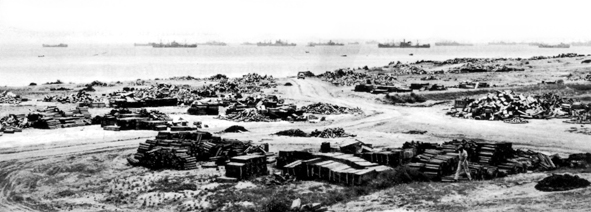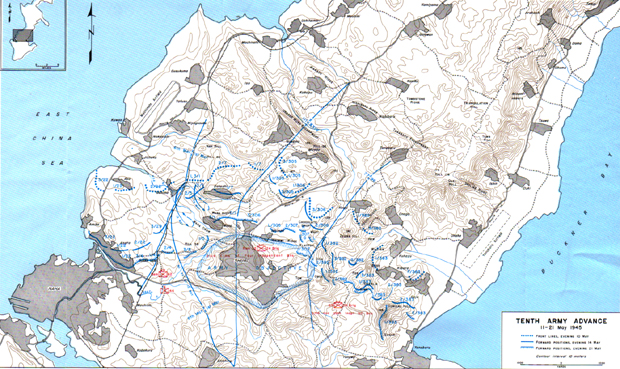On Okinawa, the US 6th Marine Division, part of US 3rd Amphibious Corps, captures most of the Sugar Loaf Hill, as well as parts of the Half Moon and the Horseshoe positions that overlook it, after several days of bitter fighting.
The US 1st Marine Division continues to battle for the Wana river valley and Wana Ridge but fails to eliminate Japanese resistance, even with flame-throwers and tanks in support.
Meanwhile, the US 77th and 96th Divisions, parts of US 24th Corps, attack Japanese positions on Flat Peak without success.

Okinawa Campaign Background — Logistics and Priority Shipments
One of the important things that seems to elude modern historians about the Pacific War is what is now referred to as “Supply Chain Management” by civilian businesses and logistics by the Military. This lack of understanding leaves many Diplomatic and Military histories of the decision to use the Atomic Bomb fundimentally flawed.


